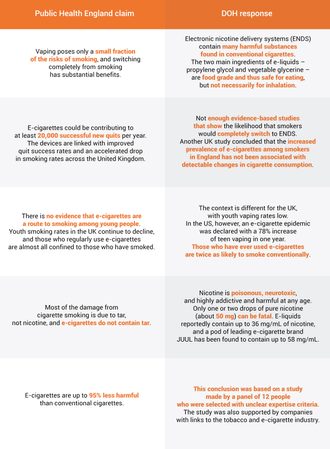SUMMARY
This is AI generated summarization, which may have errors. For context, always refer to the full article.
![[OPINION] On using fruity flavors and Pikachu to hook Pinoy youth on nicotine](https://www.rappler.com/tachyon/2021/07/saleswoman-demonstrates-vaping.jpg)
Teenagers are important for tobacco companies, because once hooked on nicotine, they become lifelong customers. A 1981 tobacco company internal memo says, “Today’s teenager is tomorrow’s potential regular customer…”
Tackling adolescent (13-15 years) smoking is already a big problem in the Philippines, with prevalence at 10% and a pre-teen initiation of 12%. Compounding this problem, even more Pinoy adolescents use electronic smoking devices (ESDs) (14%), with a high of 21% among teenage boys.
The ESD market in the Philippines, estimated to be worth about $75 million in 2020, is projected to grow to $115 million by 2023. The ESD market value of just four ASEAN countries (Indonesia, Malaysia, Philippines, Vietnam) is expected to increase from $631 million in 2020 to $757 million in 2023.
Amidst this rapidly booming business scenario, protecting youths from nicotine addiction is paramount. The World Health Organization (WHO) report on the global tobacco epidemic 2021: addressing new and emerging productsstates there are about 16,000 unique flavors available in some markets, of which more than half appeal to children and adolescents.
A recent ASH Philippines survey of online sales of ESDs found vape products targeting youth with an array of flavors such as strawberry, watermelon, candy, rainbow, mango, and lychee ice, and using popular childhood icons such as Mickey Mouse and Pikachu. These online sales lack any meaningful age verification processes, as also reported by Vera Files.

Existing Philippine laws to regulate ESD already provide safeguards to protect public health, particularly youths. Republic Act (RA) 11467 (a) prohibits sales to non-smokers and anyone below 21 years of age; (b) restricts flavors to tobacco and plain menthol; and (c) mandates the Food and Drug Administration (FDA) to regulate the manufacture, importation, sale, packaging, advertising, and distribution of these products. RA 11346 also requires graphic health warnings on all ESDs, while Executive Order No. 106 extended the nationwide smoking ban to cover ESDs.
However, the recently approved vape bill (consolidated version of Senate Bill No. 2239 and House Bill No. 9007), currently awaiting the President’s signature or veto, will reverse these policies and make these products more widely available by lowering the minimum age of access from 21 years to 18 years, allowing sales to non-smokers, allowing online marketing and sales, allowing multiple flavors that are attractive to teens, and replacing the FDA with the industry-friendly Department of Trade and Industry as the regulatory agency for these harmful products.
Doctors and public health experts led by the Philippine Medical Association have condemned this bill, referring to it as a “betrayal of the Filipino people” and that it is anti-health, anti-youth, and anti-children. Seven former health secretaries were unanimous in their rejection of the vape bill, saying it is a huge step backward in protecting Filipinos’ health, especially in a pandemic.
The vape bill, if approved, has implications beyond the Philippines. First, it digresses from the ASEAN vision of Healthy Lifestyles and brushes aside the importance of tobacco control in the achievement of our shared Sustainable Development Goals.
Considering the transnational damage brought about by the tobacco industry, controlling the tobacco epidemic – and non-communicable diseases – at scale, requires concerted efforts across governments. No government can do this alone; when one country walks back its more progressive tobacco control policies, it hurts progress within its borders and also undermines public health in other nations.
The Philippines agreed to a common regional and global health agenda and should stay true to its agreements, especially its commitments under the WHO Framework Convention on Tobacco Control which the Philippines ratified in 2005.
More than 45 countries, including six ASEAN countries (Brunei Darussalam, Cambodia, Lao PDR, Myanmar, Singapore, and Thailand) have already banned ESDs. The ASEAN region is home to 124 million smokers and struggling with the health and economic consequences of the COVID-19 pandemic. The Philippines does not need a new generation of nicotine addicts. – Rappler.com
Dr. Ulysses Dorotheo is an internationally renowned Filipino tobacco control advocate with 25+ years of experience in patient care, education, and advocacy. Currently, Dr. Yul is the Executive Director of the Southeast Asia Tobacco Control Alliance (SEATCA) and a member of the WHO Civil Society Working Group on Non-Communicable Diseases (NCDs) and the World Heart Federation Tobacco Experts Group.
Add a comment
How does this make you feel?

There are no comments yet. Add your comment to start the conversation.